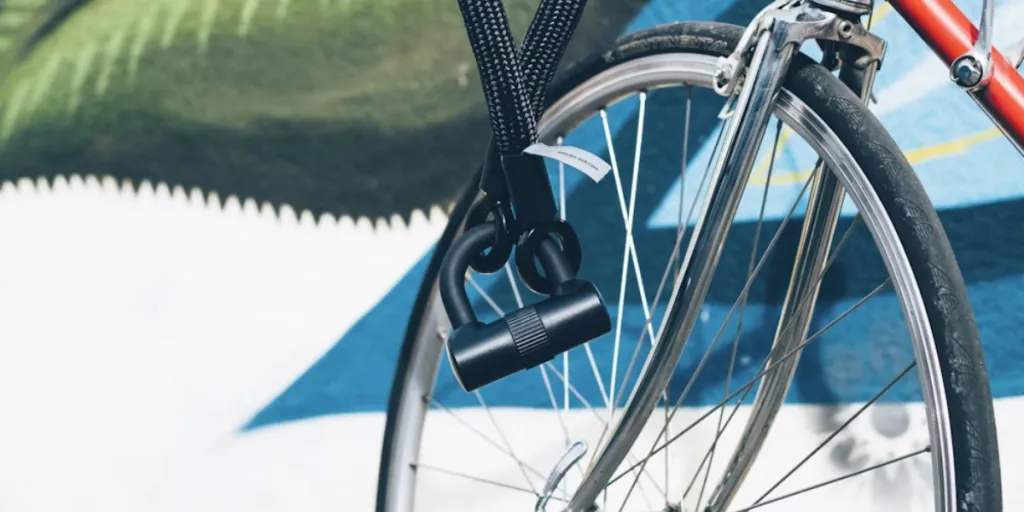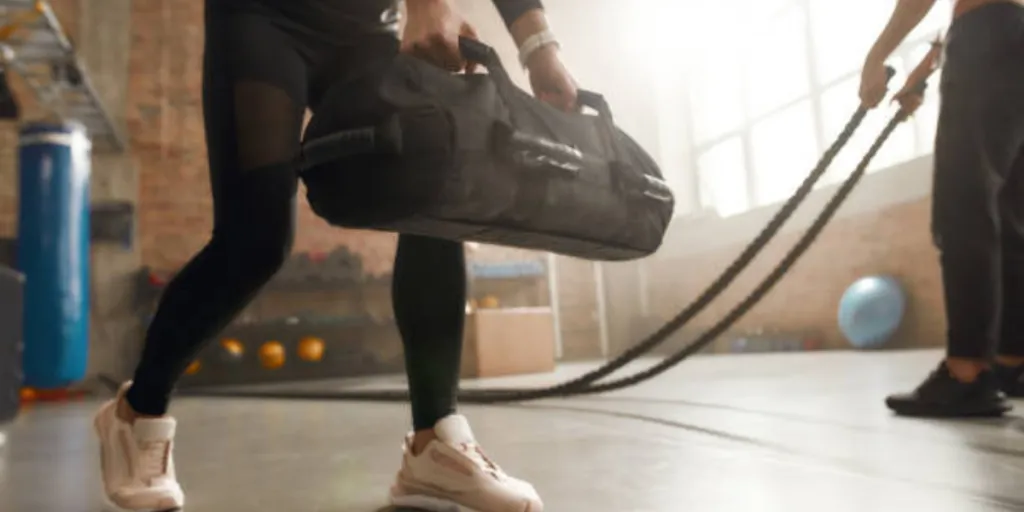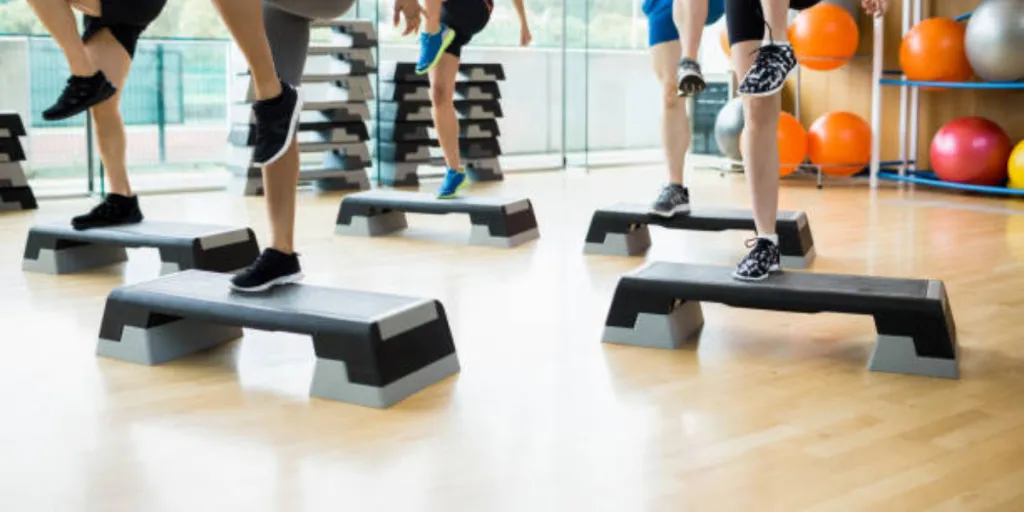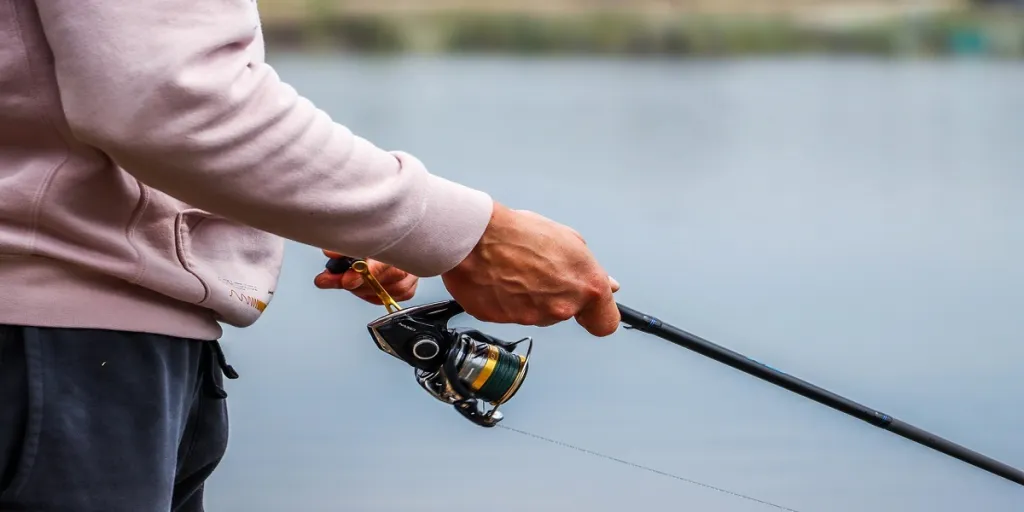Bike theft is a common occurrence globally, with countries like the United States recording an average of 175,200 bicycles stolen each year. That’s why bike locks are a must-have for consumers buying new bikes or looking to secure existing ones.
However, the market is saturated with various options, offering different protection levels against bike thieves. Businesses new to the cycling or bicycle security market may find the many options confusing.
Worry not as this guide will walk you through four popular locks currently dominating the market.
Table of Contents
What’s the future of the bike lock market?
4 types of bike locks for increased security in 2024
Conclusion
What’s the future of the bike lock market?
Experts valued the global bike lock market at US $1.39 billion in 2022 and based on their predictions, will increase to US $2.25 billion by 2031 at a 5.5% CAGR.
Demand for bike locks is surging as more consumers choose bicycles as a convenient travel method. Experts predict the rising demand for cycling as a recreational activity will further fuel the bike lock market.
Europe has emerged as the dominant region for the bike lock market, and reports suggest that it will continue to lead more and more of its population choose to cycle as a way to mitigate the effects of pollution and global warming.
4 types of bike locks for increased security in 2024
D-locks
D-locks are the most common type of bike locks available today. They’ve been around since the 1970s and have maintained the status of the best lock to protect bikes.
These locks, similar to an oversized padlock, have two main components: a U-shaped steel shackle and a barrel-shaped locking device. Combined, they create a distinctive D-shape, and serve as a top-notch deterrent against thieves.
More importantly, D-locks come in various sizes, materials, and price ranges, making them suitable for many bicycle types and consumers. While they have some limitations due to their solid construction, D-locks can effectively secure wheels, quick-release components, and other parts.
As a testament to their growing popularity, D-locks witnessed a massive 20% increase in average monthly searches, rising from 110,000 in April to 165,000 in November, according to Google Ads.
Pros
D-locks have a provenly robust design that is able to resist bolt cutters, picking, drilling, and leverage attacks, depending on their quality
Generally lighter than most chain variants
- Available at every Sold Secure rating level (bronze, silver, gold, and diamond)
Cons
- Can be heavy and difficult to lug around
- May be tricky to secure around non-standard or bigger objects, depending on the lock’s size and flexibility
Chain locks
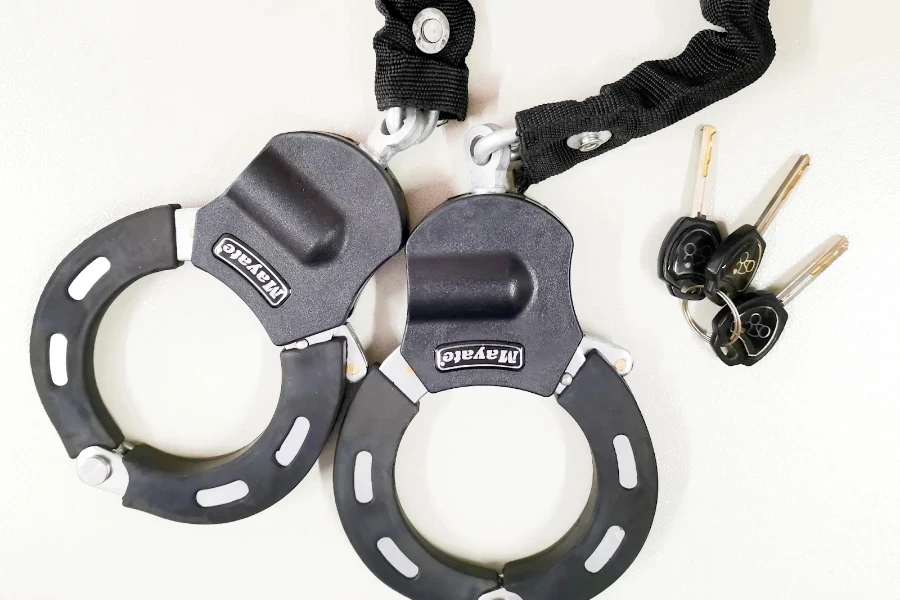
Chain locks, a favorite for motorbike owners, are equally effective for securing bicycles. In the higher price range, these locks feature a toughened metal chain link encased in kevlar – the same material used in flak jackets – making them resistant to cutting tools.
While chain locks offer more flexibility than D-locks or cable variants, they’re generally pricier per pound. And despite their weight, they’re still highly adaptable, as consumers can strap them around their waist or chest while on the go. They’re also fairly popular, with 27,100 potential consumers searching for them monthly.
Chain locks can hold their own against hammers and shackles but do not outperform D-locks when it comes to bolt-cropping. The more portable chain locks typically measure up to 12mm in width, sacrificing some security but serving as an excellent visual deterrent.
For those seeking more robust protection, a 16mm-thick link is sufficient to resist common bolt cutters. But it’ll mean lugging around an additional 4kg in weight.
Pros
- Easy to secure bikes to various objects/stands due to their size and flexibility
- Their pliable nature makes it tricky for thieves to use power-cutting tools on them
- Also available at every Sold Secure rating level (bronze, silver, gold, and diamond)
Cons
- Can be heavy and bulky
- Locks with exposed links (no protective sleeve) may damage the bike’s paintwork
Cable locks
Cable locks are popular (receiving up to 18,100 searches in November 2023) among cyclists for their flexible and adaptable features. They effortlessly extend and secure around various immovable objects, increasing their practicality. As the lightest option on this list, cable locks are ideal for daily commuting.
In addition to being budget-friendly, the market cable locks of varying deterrent levels. Some variants are specifically designed to be visual deterrents, providing an affordable yet effective security option for budget-conscious consumers.
However, cable locks provide reduced security in comparison to other lock types. While they excel in practicality and weight, they fall short in deterrence and time-to-break. Therefore, these locks are often better suited as secondary options compared to cable or D-locks.
Pros
- Light and easy to carry
- One of the best visual/basic deterrents for low-risk areas
- Work well as extra locks to protect bike parts
Cons
- Not as effective as primary locks
- Not the best option for medium or high-risk areas, as these locks are weak to most attacks
Folding locks
Folding locks are similar to chain variants but feature metal plates linked by rivets instead of chain links. These plates are flexible enough to rotate, allowing the user to secure it around various objects, even two bicycles if necessary.
Moreover, these locks are versatile, and consumers can easily fold them into manageable sizes. Folding locks are proven to be a more effective deterrent than cable locks but do not match the security level of D-locks, generally placing them on the lower end of recognized security ratings and making them potentially unsuitable for situations where bikes are not in sight 100% of the time.
Pros
- Can be mounted on the bike’s frame, making them easy to carry around
- Lighter than chain and D-locks
Cons
- Not as common as chain or D-locks
Conclusion
Bike lock security is categorized based on the Sold Secure industry standard. This evaluation provides four distinct ratings ranging from bronze to diamond, offering users a clear and recognizable security scale.
Each bike lock type offers a level of security, even if it’s just visual. However, in places where bike theft is common, it’s best to offer consumers a range of options.
Generally, a bike lock combined with a cable lock offers the best security. However, consumers may want other types for personal reasons.
To browse thousands of options covering all four of these top bicycle lock types, visit Alibaba.com.
